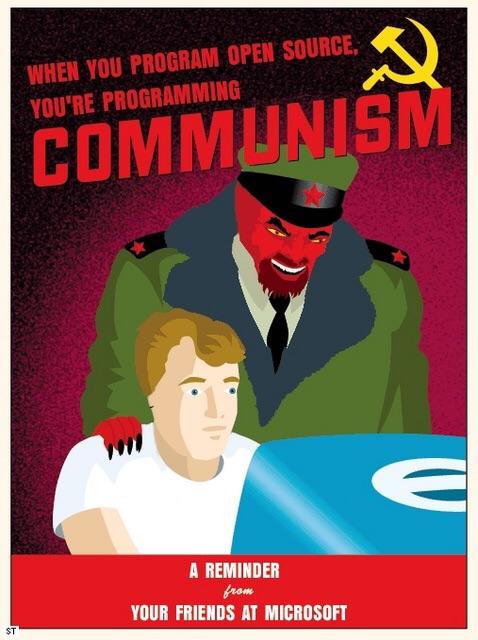

Illegal but only sparingly enforced.


Illegal but only sparingly enforced.


I mean actually. But sometimes hearing westoid cope is also fun, cause they’d come to the same questions if they just thought for a minute.
In capitalism, a scam is when a poor person does it.
That’s the weird thing about the Madoff example. He wasn’t poor, and was very well respected on Wall Street.


From my perspective stocks are a huge scam.
I watched a documentary on Bernie Madoff last year and never figured out what the bad thing was that he did. Like yes obviously it’s bad when people lose their life savings, but why was it illegal the way Madoff did it and not illegal when it’s someone else? Who chooses when it’s a Ponzi scheme and when it’s the invisible hand of the market? For that matter, when is a bank a legitimate bank and not a ponzi scheme?
Great essay, thanks for sharing! Could you please link the German original?


Also just from my personal social circles, all the moms I know are wage-labouring as much as they can. Cost of living isn’t getting any cheaper and family benefits exist but only serve to paper over the gap for a short time. The only things holding working moms back from working more (out of necessity) are lack of childcare and the so-called “part time trap.”


Other German politicians and think tanks have also suggested enticing retirees to return to work, aside from the usual noise of constantly raising the retirement age.


You’d have thought they already realized that thirty years ago when the liberals emptied the prisons of formerly communist countries only to realize the inmates actually were murderers, r*pists, etc.


(2 of 2) An excerpt from “Stasi State or Socialist Paradise” by Bruni de la Motte:
Since unification, the German government has spared no effort or expense to investigate what it calls ‘crimes’ of the GDR. The Enquete Kommission (Commission of Enquiry) established by the government and given the task of investigating the ’SED dictatorship’ detailed a series of victim categories for which evidence was to be sought. These were: deaths in custody, contract assassinations by the state both inside the GDR and abroad, rendition to foreign powers, murder with the collaboration of medics, the withholding of necessary medical aid and forced adoptions. 50
As a result, around 30,000 cases were opened by public prosecutors against former employees of the Stasi. In the end, 20 individuals were found guilty, of whom 12 were given fines and seven suspended sentences. Chief prosecutor Schaefgen was unable to find a single case of torture, the use of radioactive radiation, of pharmacological drugs, the administering of electrical shocks or similar torture methods. And certainly not for want of strenuous effort. There is a huge chasm between the lurid stories spread by the media and the facts themselves, but despite this, the same accusations are continually regurgitated.
For example, one of the big West German tabloid newspapers reported that in Stasi prisons more than 2,500 prisoners were murdered and thousands committed suicide. In reality, nobody was murdered and in almost four decades, 14 suicides took place in all the holding prisons of the State Security apparatus. 51
In contrast to the Stasi files, West German secret service (BND) files relating to the Nazi past are still kept under lock and key. In 2012, the Linke party faction in the Bundestag requested that BND files on the Nazis be made accessible. At the same time, the party also asked the government to release all files concerning any collaboration and possible obstruction of due judicial process in the prosecution of Nazi war criminals. These requests were rejected – even the files relating to top Nazi, Adolf Eichmann, remain secret.
The statistic that 180km of shelving is needed to hold all Stasi documents is continually reiterated by the authorities. You have to delve assiduously in order to find out what is actually contained in these kilometers of documentation, which include: files on individuals requesting official recognition as ‘victims of fascism’, documents about the Nazi period, about the Eastern offices of those parties - SPD, CDU and LDPD – re-established after the war, reparations paid to the Soviet Union, Soviet military tribunals and other judicial papers, information about the GDR and the West German armies, counter intelligence reports, exchange of agents, information on Western spy agencies, applications for permission to emigrate, foreign relations maintained by the parties, verbatim transcripts from Western agencies and ministries, details of town twinning between the GDR and FRG, property ownership details, survey reports on ‘attitudes of the population’, materials about housing, workplace rights, problems of food supply, imports that were made despite the Western embargo, monitoring of terrorist and extremist groups around the world, nuclear security and protection against radiation, environmental problems, CVs of those permitted to travel to the West, security measures for teams going to the Olympic Games… Much of it appears to be normal run-of-the-mill documentation that any state authority would keep. ^52 ^
Both within and outside Germany the image of the GDR as an ‘unjust/illegal state’ in which every citizen was either intimidated by the Stasi or kept under surveillance by them or both, has been firmly cemented in the consciousness with the result that the GDR today has become synonymous with the word Stasi . But those who argue that the organisation penetrated all aspects of life, ignore the memories of most of those who lived in the GDR. Their assertions provoke tedium, prickliness and defiance in the latter. If, as a GDR citizen, you were not a dissident or expressed opposition to the state or socialism as a concept, you would probably have had little or no contact with the Stasi throughout your life. But if you did express opposition – as many artists by the very nature of their work did – then you would almost certainly have dealings with it. However, the Stasi was hardly the monstrous all-seeing, omnipotent vicious organisation it has been depicted. What is also certainly true, is that the Stasi was not a corrupt force in the sense that the British police were recently shown to be.
[50] German Bundestag Enquete-Kommission. Aufarbeitung von Geschichte und Folgen der SED-Diktatur in Deutschland, Drucksache 12/7820, p. 229.
[51] Ralph Hartmann. Die DDR unterm Lügenberg (Berlin: edition ost, 2010)
[52] Daniela Dahn „Der Waschzwang des Staates - Wem gehört die Gauck-Behörde?”, Süddeutsche Zeitung 17./18.1.1998.


(1 of 2) An excerpt from “Stasi State or Socialist Paradise” by Bruni de la Motte:
The State Security Services
The name ‘Stasi’ has now been adopted worldwide as the quintessential short-term description of an extremely oppressive and brutal police state. But what was the reality of the GDR’s Security Service (Stasi for short)?
After the war, before the GDR came into being, East German security was undertaken by the Soviet Union and the KGB. Much of their activities in those early years was concerned with tracing and convicting leading Nazis and those who had committed war crimes.
Hitler’s former chief security officer on the Eastern Front, Major General Reinhard Gehlen, was recruited in 1946 by the USA largely because of his detailed knowledge of the Soviet Union and of communist activities. Gehlen offered the US his intelligence archives and his network of contacts in return for his freedom and that of his colleagues. He handpicked 350 former agents to join him, a number that eventually grew to 4,000 undercover agents. This group soon acquired the sobriquet ‘Gehlen Organization’. When the ‘Iron Curtain’ was drawn in 1946, leaving the Western allies with virtually no intelligence sources in Eastern Europe, Gehlen’s vast store of knowledge made him very valuable.
He went on to head West Germany’s intelligence organisation, the BND, until 1968. The BND had a clear anti-communist focus right from the start, and the organisation was populated by many former Nazis. It was hardly surprising that the GDR felt threatened.
In response to the employment of former top Nazis in the West, the Soviet Union felt obliged to set up its own East German security organisation which then morphed into the GDR’s Ministry of State Security in 1950.
Just as the USA has its FBI and CIA and Britain its MI5 and MI6 (plus Special Branch and the Metropolitan Police Anti-terrorist Branch), the GDR security service had two arms – the counter espionage section headed by Markus Wolf and the internal security section headed by Erich Mielke.
Markus Wolf was a highly cultured Jewish intellectual, the son of Friedrich Wolf, a medical doctor and anti-fascist who was also a renowned playwright, and the brother of Konrad Wolf, one of the GDR’s most talented and respected film directors. Erich Mielke came from a working class background and was a communist already in the pre-Hitler days, spending the Nazi years in Soviet exile; he was an old style, hard-line communist.
The central role of all security agencies, and the GDR was no different, was to protect the state from attempts to undermine or destabilise it.
The early years of the GDR, until 1961, with its still open border to West Berlin, were marked by acts of sabotage by those opposed to it as well as infiltration by Western spy agencies, as so graphically depicted in the novels of John le Carré. The GDR state security forces had their work cut out simply dealing with such issues.
Its counter-espionage arm was one of the most effective and successful agencies of any state; it penetrated deep into NATO headquarters and even the West German Chancellor’s office. After the demise of the GDR, its chief, Markus Wolf, was put on trial and found guilty of carrying out espionage against the Federal Republic. This was quite grotesque since, after all, this had been his job – but it demonstrated that the FRG had never recognised the GDR as a sovereign state, despite its place in the UN and world-wide recognition by other states. Wolf’s conviction was later annulled after a ruling by the High Court. Wolf said that, shortly before unification, the CIA had offered him a seven-figure sum and a new identity in California if he were willing to work for them – something he spurned.
When reviewing the role of the security services responsible for internal security in the GDR, one has to take account of the changing historical circumstances during the country’s existence. There is no doubt that in the early years, in which the Soviet Union played a dominant role, serious breaches of democratic norms took place. With the increased stabilisation of the GDR and certainly after the closing of its borders, the security services adopted a less confrontational and panic-led role.
The internal wing of the State Security Services, and it is this wing that is commonly referred to as the Stasi today, was primarily concerned with nipping in the bud any group or individual activity which it deemed threatening to the stability of the state. Most of its activities involved surveillance and sometimes the threat of punitive action. Those seen as undermining the state were indeed arrested and convicted for political actions that in most Western democratic states would be deemed legal and permissible. Even an application to emigrate to the West was considered an ‘unfriendly act’ and would invariably incur repercussions, even though thousands, often after delays and bureaucratic procedures, were allowed to emigrate.
Over the years, several people were convicted and imprisoned for political activities, but most of the sentences were for several months or a few years, rarely for very long periods. A number of these prisoners also had their prison sentences curtailed when they were exchanged for GDR agents imprisoned in West Germany or for hard currency; others were simply expelled from the country on release. Several political dissidents who served their sentences and were released decided to stay in the GDR and were integrated back into society.
Few of us would deny the security services a key role in combatting terrorism or the threat of violence by any organisation or individual to further their political aims, but many of us would balk at the use of the security services to undermine democratic rights or peaceful protest, which the Stasi certainly did.
Despite depictions to the contrary, the Stasi was not a force unto itself, it operated under the guidance of the Party leadership and was always subject to Party control. It rarely, if ever, operated in an arbitrary or gratuitous manner of its own accord. That said, it was undoubtedly a powerful and oppressive force within the state, because it was used to enforce compliance by intimidation rather than persuasion and political argument.
One example of such oppressive action by the Stasi against a democratic organisation was that taken against the movement ‘Swords into Ploughshares’, which utilised an image of the famous Soviet sculpture of the same title. The organisation emerged in the GDR in the early 1980s, at a time when the US was stationing cruise missiles in the FRG and the Soviet Union responded by stationing SS20 rockets in the GDR. The aim of the organisation was to champion pacifism, disarmament and to oppose the global weapons industry. It was a movement initiated and supported by church organisations and pacifists. Because of its sane argumentation it gained rapid support, but the state feared its popularity could lead to an undermining of its defence policy and encourage young men to become conscientious objectors and refuse to serve in the armed forces – at this time both Germanies still had conscription.
So how did the Stasi react to the ‘Swords into Ploughshares’ movement? It put pressure on church officials to curb the organisation’s activity, it got schools and colleges to ban the wearing of the badge or the displaying of posters. Individual youngsters – those involved were mainly young – who refused to be cowed and were determined to confront the authorities, were threatened with or, in some cases, actually were expelled from school or college or not allowed to sit their exams. Several who took part in demonstrations or pickets were even given short custodial sentences.
While this Stasi action was clearly a breach of democratic procedure and an abuse of human rights, its action could hardly be characterised as extreme brutality. But it was exactly this sort of action that the Stasi usually resorted to, using pressure and threats to achieve its aims.
The security services did flout democratic norms, undertook action that was illegal, even in terms of the GDR’s constitution – but, as we know today, this seems to be in the nature of all security services. What remains a fact though is that the Stasi was an organisation that carried out a humiliating monitoring of all sections of society and, in the name of protecting the state, suppressed almost any oppositional activity or action it deemed would undermine the security of the state. The impression has been deliberately fostered that there was nationwide surveillance by the Stasi, that no one could even tell a political joke without being informed on and arrested. In actual fact, only 2 per cent of the population was involved in Stasi activities – and that includes full-time employees and informants - according to official data disclosed by Roger Engelmann, Project Director of the Federal German institution for the investigation of the Stasi files. So, the much publicised ‘total surveillance’ system, fell far short of such a description.


If the whole Russia thing is a hoax, why do I still insist on believing it?


If I have time tomorrow I’ll find the section on the Stasi from “Stasi State or Socialist Paradise”.
Maybe DW would like to write some articles on Oganisation Gehlen (BND, West Germany’s foreign intelligence service, led by a Nazi for nearly twenty years) with the tone of this one. Their previous articles include sub-headlines like this one:
Germany’s foreign intelligence service, BND, says it delivers information that others don’t. Over its 50-year history, it has employed former Nazis and received much bad press, but has often proved it does good work.


Only some state and local government departments, likely more because they don’t have the funds for paid software.


They’d only double down on using compromised systems.


IIRC some people on here have gotten previous volumes for free by just asking the Chinese Embassy nicely.


“Each and every man under my command owes me 100 Nazi scalps. And I want my scalps. And all y’all will get me 100 Nazi scalps taken from the heads of 100 dead Nazis. Or you will die trying!”
―Aldo Raine, Inglourious Basterds


As if there was ever a time when the US central bank was independent from the state apparatus and not an integral part of it.
I just grabbed a 9060XT open box deal without thinking about driver support, I’m using Mint 22.1 as well. YMMV but I can’t get any kernel besides 6.8 to boot, not even the Mint supported 6.11 HWE. Video output works but the drivers don’t load and even scrolling down a webpage gives me screen tearing. I did get a more recent Mesa version with the kisak ppa but it hasn’t helped. Can’t even go above 60Hz refresh rate.
I tried Ubuntu 25.04 on a LiveUSB and it’s basically plug and play and might have even automatically switched to the 144Hz monitor refresh rate.
I don’t have a whole lot of time for getting a new distro set up right now. I will wait until Mint 22.2 (coming soon? with a newer kernel hopefully) and see how that goes.


And yet it took until 2020 for any MSM to report that all of Crypto AG’s equipment was backdoored and that it was indeed a CIA cutout the whole time. That information was available since at least 1993 when the West German intelligence sold its share to the CIA and the Swiss government as well as some reporters caught wind of it.


Literally speaking, liberal. But nobody except a communist would get it.
Thank you!